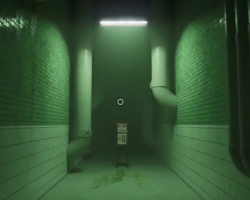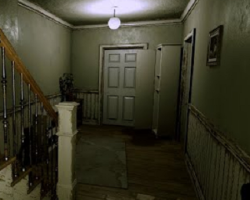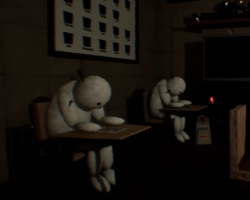Advertisement
Subliminal

Subliminal is a psychological narrative game about exploring the spaces created by memory and perception. The story follows a character who awakens in a structure that exists outside of time — a facility that shifts its form with every step. Light, reflection, and geometry function not as decoration but as parts of the narrative itself. The world seems mechanical, but its hallways, storage rooms, and empty chambers echo personal recollections. The player’s role is to uncover what connects them to this place by observing how it reacts to their presence.
Story Foundation
At the start of Subliminal, the protagonist has no memory of arriving. The building stretches endlessly, filled with signs of previous activity but no inhabitants. Every sound and flicker of light implies something has been left behind. As the player explores, they begin to encounter spaces that contradict logic — hallways that loop, rooms that expand when viewed from certain angles, and reflections that reveal alternate versions of the same scene. The structure itself becomes the main storyteller, guiding the player toward understanding rather than providing explicit answers.
Narrative Structure
The story unfolds through environmental detail and layered interaction:
- Light functions as both a tool and a metaphor, exposing hidden truths when directed properly.
- Sound distortion marks emotional moments and guides the player toward important locations.
- Repeated environments represent recurring memories or unresolved thoughts.
- The absence of dialogue forces the player to interpret meaning through observation alone.
Each of these elements forms part of a larger narrative system. The player learns not through exposition but through engagement — by noticing what changes and what remains constant within the environment.
Story Development
As the player ventures deeper, Subliminal reveals environments that reflect specific stages of personal history. Playgrounds, water facilities, and forgotten corridors appear as distorted memories rebuilt from fragments. The more the player explores, the more the world begins to reveal emotion rather than structure. Familiar sounds return in new forms, and corridors fold into themselves like thoughts repeating in the mind. The story implies that the protagonist is trapped within their own reconstruction of memory, searching for closure inside an echo of their consciousness.
Subliminal tells a story without dialogue, focusing instead on the act of perception. It transforms sound, light, and space into narrative devices that describe loss, recognition, and acceptance. The game’s structure is not about finding the end but about understanding what has already happened. Through exploration, the player becomes both observer and participant in a story written by memory itself.
Advertisement






















































































Comments